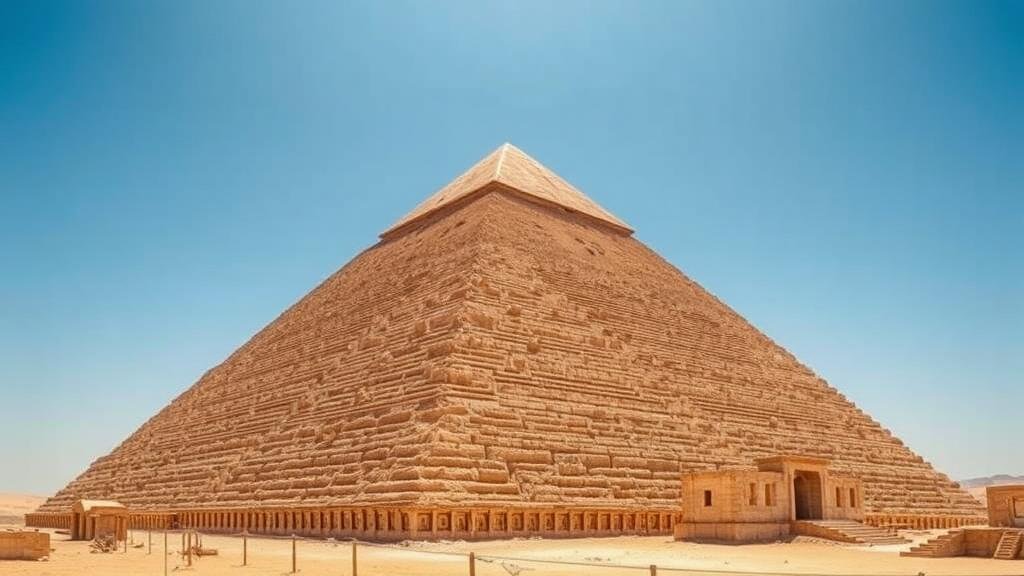Investigating the unbuilt Pyramid of Djedefre, the forgotten pharaoh of ancient Egypt.
Investigating the Unbuilt Pyramid of Djedefre: The Forgotten Pharaoh of Ancient Egypt
The history of ancient Egypt is filled with powerful figures and monumental structures, yet one pharaoh often overlooked is Djedefre, a ruler of the Fourth Dynasty. His pyramid, located just north of Giza, remains an enigmatic site–it was never completed. This article explores the significance of Djedefre, the unbuilt pyramid, and its implications in understanding ancient Egyptian culture.
Who Was Djedefre?
Djedefre, also known as Radjesekhet, ruled during the Fourth Dynasty, which spanned from about 2613 to 2494 BCE. He was the son of Pharaoh Khufu, renowned for commissioning the Great Pyramid at Giza. Djedefre ascended to the throne around 2566 BCE and ruled for approximately eight years.
Djedefres reign marked a significant transition in royal burial practices. He shifted the focus from traditional pyramid construction to the development of his own architectural vision. Djedefre was known for promoting the worship of the sun god Ra, which was reflected in the design of his tomb.
The Site of the Unbuilt Pyramid
Djedefres pyramid was intended to be located at Abu Roash, about 8 kilometers north of the Great Pyramid of Giza. While many of the pyramids of his predecessors are iconic for their grandeur, Djedefres pyramid was notably different–only a few blocks of limestone remain today, hinting at the ambitious plans that were never realized.
- The site measures approximately 100 meters in length.
- Evidence suggests it was designed to be a step pyramid, similar to those of earlier pharaohs.
The Architectural Ambitions of Djedefre
Despite never being completed, Djedefres pyramid was intended to symbolize both his divine kingship and the powerful role of the sun god Ra. The design reflects advanced architectural planning, including features that foreshadowed later pyramid designs. But, several factors contributed to its incomplete status:
- Material Shortages: The high demand for limestone for other pyramids may have hindered construction.
- Political Instability: Djedefres reign was marked by potential conflicts with his half-brother, Khafre, which may have diverted resources.
- Religious Shift: The elevation of Ras prominence might have caused a shift in the architectural focus away from traditional burial practices.
Significance of the Unbuilt Pyramid
The unbuilt pyramid of Djedefre is significant for several reasons:
- Cultural Insights: The shift towards the sun god Ra indicates changing religious beliefs during Djedefres reign.
- Historical Context: Understanding the architectural evolution from pyramids like those of Khufu to the designs associated with his heirs provides insight into the sociopolitical landscape of ancient Egypt.
- Archaeological Value: Ongoing excavations present opportunities to discover artifacts that could reveal more about Djedefres reign and the motivations behind his unbuilt edifice.
Modern Archaeological Investigations
Excavations at the site of Djedefres pyramid began as early as the late 19th century and have continued into the 21st century. Modern technology such as ground-penetrating radar has been employed to survey the area, revealing the outlines of the pyramid and accompanying mortuary complexes.
Archaeologists have found numerous artifacts that suggest Djedefre was venerated posthumously, contradicting the idea that his reign was entirely overshadowed by the accomplishments of his father and brother.
Actionable Takeaways
To fully appreciate the legacy of Djedefre and his unbuilt pyramid, consider the following:
- Visit Egypt to explore the Giza plateau and the nearby Abu Roash site to understand the historical context firsthand.
- Engage with scholarly articles that discuss ancient Egyptian architectural innovations and their religious implications.
- Follow current archaeological discoveries related to Djedefre to stay informed about how our understanding of this forgotten pharaoh continues to evolve.
In summary, the unbuilt pyramid of Djedefre offers unique insights into the transitional period of the Fourth Dynasty. Through ongoing research and archaeological efforts, we can unravel the mysteries of this often-overlooked figure in ancient Egyptian history.



